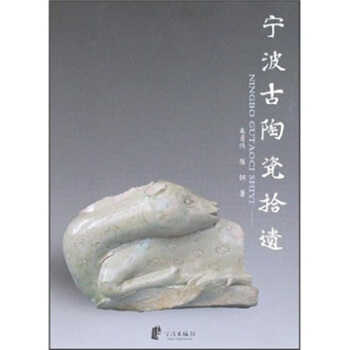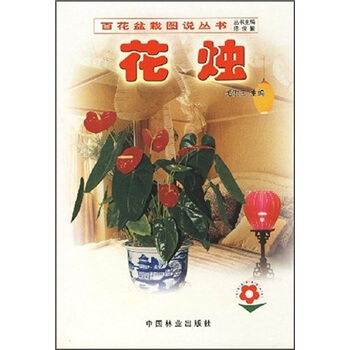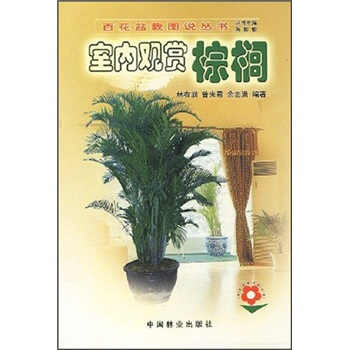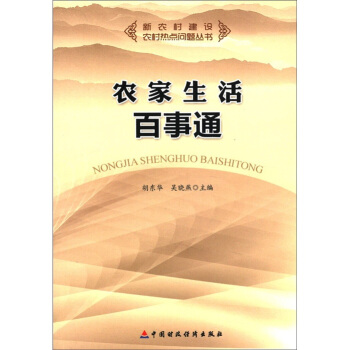![中國國寶係列:清代鼻煙壺(英文版) [Snuff Bottles in the Qing Dynasty]](https://pic.windowsfront.com/10678873/58cd4042Nd7854cb6.jpg)

具體描述
內容簡介
清代鼻煙壺是中西文化交融的結晶,玲瓏之態讓人愛不釋手,鼻煙壺的發展貫穿整個清朝曆史,真實地濃縮瞭中國的傳統文化,小小鼻煙壺,集曆代文化藝術精華於一爐,沒有一項中國藝術工藝中能集這麼多工藝變化於一身,近年來,鼻煙壺的投資和集藏價值不斷攀升,引起國外朋友的濃厚興趣。本書嚮外國讀者介紹有關清代鼻煙壺的知識,引導讀者欣賞種類繁多的清代鼻煙壺,並從中得到一種美的享受,具有一定的收藏價值。本畫冊資料豐富,圖片精美,書中所有展品均藏於北京故宮博物院。
A snuff bottle, as a snuff container, represents a unique variety of China s ancient cultural relics. It first appeared in the royal court in the Emperor Kangxi Period (1661-1722) of the Qing Dynasty (1644-1911), became popular in the capital, and influenced the entire nation. It was made by large quantities in the royal and civil works.
This book introduces the qing dynasty snuff bottle.
作者簡介
ZhangRong, born in 1963, graduated from the Department of History ofNankai University, majoring in museums. She has been working forthe Palace Museum in Beijing since 1985, and once served as deputydirector of the Palace Department, and director of the AncientObjects Department. She holds the academic title of researchfellow.Major works published: Models of AncientLacquerwork and Appreciation, Snuff Bottles--Cultural Relics inPalm and Ancient Lacquerwrok.
內頁插圖
目錄
CONTENTS
Preface
Glass snuff bottles
Enameled Metal Body Snuff Bottles
Jade Snuff Bottles
Porcelain Snuff Bottles
Snuff Bottles Made of Other Materials
Internally Drawn Snuff Bottles
A Record of Auction of Collections
Catalogue of Snuff Bottle Materials
精彩書摘
Glass snuff bottles
Glass snuff bottles are produced using various technology means. Glass snuff bottles of the Qing Dynasty are characterized by the earliest fabrication time, the longest duration time, the largest number and the richest technology varieties. From the aspects of kinds and processing technologies of glass snuff bottles, we can have a view on the entire development path of glass making in the Qing Dynasty.
The places where glass can be fired mainly included the glass plant of the Palace Construction Section, Yanshen Town of Shandong Province (later known as Boshan), Guangzhou, Suzhou and Beijing and so on. In the 35th year of the Kangxi Period (1696), the royal glass plant was set up, attached to the Construction Section of the Royal Household Bureau. In the reign of Yongzheng, a branch was set up in the Summer Palace. After the establishment of the glass plant, many craftsmen were recruited from such places as Guangzhou and Shandong, etc.
According to records, in the reign of Emperor Kangxi, there was glass of being black, green, white, purple and grape colored, etc., but with no record of snuff bottles, letting alone the real objects. While in the reign of Emperor Yongzheng, there were snuff bottles made of such glass as monochrome glass, Gold–star colorful glass, colored wire wrapping glass, flower glass, cover glass, painted enamel glass, etc, while with the shapes covering octagonal shape, chicken drum, oil type, and so on. The production of glass snuff bottles reached the peak in the reign of Emperor Qianlong, featured by their great quantity, rich kinds and fine fabrication, which will be difficult for other dynasties to reach.
According to the Qing Dynasty’s principles and methods of classifying the glass works, glass snuff bottles can be divided into monochrome glass, cover glass, painted enamel glass, Gold–star glass and gold-painted glass, etc.
The monochrome snuff bottles were the mainstream at that time, which were continuously produced from the reign of Emperor Kangxi to Emperor Xuantong (1906–1967, the last emperor of China) . The cover glass snuff bottles could only be found in the reign of Emperor Qianlong. The glass embryo painted enamel snuff bottles emerged in the Kangxi Period, but those remained are mainly produced in the reign of Emperor Qianlong.
Gold–star glass, also known as "Wendou Lina stone", was only used in the reign of Emperor Qianlong. It is named like that because numerous golden spots flash inside the red–brown glass body. In the 6th year of the Qianlong Period (1741), under the participation and guidance of two western missionaries, namely Ji Wen and Tang Zhizhong, the gold–star glass snuff bottle were officially fired out in the glass plant of the Construction Section. The gold–star glass snuff bottles are rather rare and valuable in the Qing Dynasty due to the little quantity. Now there are only about 40 gold–star glass wares collected in the Palace Museum in Beijing, including only about 5 gold–star glass snuff bottles. The gilt glass was first found in the reign of Emperor Yongzheng. While in the Archives of the Qing Dynasty made in the reign of Emperor Qianlong, it is recorded as "blue glass vase painted with gold flowers and black glass snuff bottle with gilt ". Only one gold-painted glass ware in the reign of Emperor Qianlong, namely the gold-painted snuff bottle painted with landscapes and characters, is collected in the Palace Museum and very valuable.
前言/序言
Preface
A snuff bottle, as a snuff container, represents a unique variety of China’s ancient cultural relics. It first appeared in the royal court in the Emperor Kangxi Period (1661–1722) of the Qing Dynasty (1644–1911), became popular in the capital, and influenced the entire nation. It was made by large quantities in the royal and civil works. This was closely associated with the prevailing customs of taking snuff, and also related to the vigorous advocacy and participation of the emperors. Snuff bottles have become valuable artistic works appreciated, collected by people, although they were initially practical items.
There is a legend about the appearance of snuff. In the middle of the 16th century, a European tobacco merchant ailed from a heavy stock that mildewed and deteriorated because of poor operation. While feeling desperate about the tobacco that piled up, the merchant smelled an unusual smell with his nose from the tobacco that mildewed. The smell was so unique and fascinating that he couldn’t help but breathing it with greed, and had an unprecedented experience. Enjoying this special taste, the merchant thought of another way to make a fortune. Shortly after that, the tobacco merchant, who almost went bankrupt, announced he had invented a new tobacco—snuff. Since then, people no longer needed to light cigarettes with fire, and no longer annoyed others because of dense smoke. This was one of the stories about how snuff came into being. Although it is impossible to judge whether this story is true or not, this story itself does make sense.
In reality, to make true snuff, the first step is to grind superior tobacco into extremely fine powder, then flavor and precious medical materials such as muskiness are added to the powder, and finally the mixture is fine processed and sealed in wax balls for aging in several years before normal use. After aging in wax balls for several and even tens of years, snuff will have multiple colors like black purple, dark yellow and light yellow, and smell mellow and acrid. Specifically, there are mainly five smells—acid, smell of mutton, paste, soy and sweet. Sometimes, a snuff may have several smells, and acridity is the best. However, even an acrid snuff offers limitless mellowness after acridity.
Just as American natives invented the tobacco lighted with fire to mitigate the fatigue of labor, Europeans or Chinese favored snuff, possibly because of its special functions needed by people. These functions mainly include several aspects: First, to refresh oneself and strike the eye; second, to prevent disease; third, to relax oneself and activate blood; fourth, to contain the social meanings like friendship, harmony and respect; and finally, to act as a token used to offer sacrifice to gods, Buddha and ancestors.
According to the mainstream opinion, Matteo Ricci (1552–1610), an Italian missionary, came to China in the Emperor Wanli Period (1573–1620) of the Ming Dynasty (1368–1644) . He landed in Guangdong and traveled northwards to visit the emperor in Beijing. He offered his Italian snuff to the officials he met on the way, and also gave some precious snuff to the emperor. Fond of the snuff at the first glance, Emperor Wanli (Zhu Yijun, 1563–1620) highly praised Matteo Ricci, and offered him a high rank. This was known by some other Western envoys. Then, snuff became the best gift for Chinese emperors and local officials, and the habit of smelling snuff also spread quickly in China.
Snuff bottles, small but exquisite, are favored because of both changeable moldings and colorful patterns. At the same time, their delicate packages are also fascinating. A snuff bottle is composed of a bottle, a bottle lid, a bottle spoon, a snuff plate and a package. Be
用戶評價
相關圖書
本站所有內容均為互聯網搜尋引擎提供的公開搜索信息,本站不存儲任何數據與內容,任何內容與數據均與本站無關,如有需要請聯繫相關搜索引擎包括但不限於百度,google,bing,sogou 等
© 2025 windowsfront.com All Rights Reserved. 靜流書站 版權所有




















